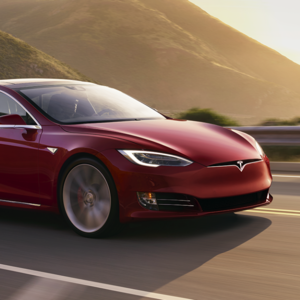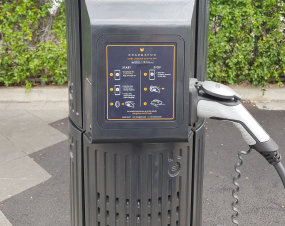Elon Musk was proud to announce the “bulletproof” Tesla Cybertruck last month. It’s cold-pressed steel exoskeleton held up to a sledgehammer live on stage — even if the windows weren’t so lucky — and the crowd went wild. A reported 250,000 people have paid the $150 deposit to get in line for one. There isn’t anything like it on the roads of Australia — but perhaps not for the reasons we first thought.
James Goodwin, chief executive at Australian vehicle safety regulator ANCAP, told news.com.au:
“Thinking about other road users there, it’s got a fairly harsh front and not a whole lot of areas that would provide some give if there was a strike with a pedestrian. We do both head-form and leg-form impacts […] the rake would look like it’s not very forgiving in terms of legs.”
Taking another look at the Cybertruck design, it’s not hard to see what he’s talking about. The rounded edges that have dominated automotive design for years aren’t just cosmetic or aerodynamic — they’re needed to meet Australian regulations for pedestrian safety. According to ANCAP’s “vulnerable road user protection” guidelines:
“[ANCAP] assesses the design of the front of the vehicle to minimise injury risk to a struck pedestrian. Vehicles are also assessed for their ability to actively avoid or mitigate impacts with pedestrians and cyclists.”
And here’s the front of the Cybertruck again.

Yeah, it’s hard to see this design getting past Aussie regulators as it currently stands. However we do need to remember the Cybertruck silhouette will have to change anyway; it doesn’t have any rear-view mirrors, for a start.
There’s also the issue of crumple zones. That hammer-proof exterior looks great on stage, but what will be the impacts on those inside when the force of an impact isn’t dissipated through a malleable exterior? Remember, crumple zones are specifically designed into vehicles so that the occupants are kept safe; taking them away will have consequences one way or the other.
Goodwin also told news.com.au:
“We would expect that a vehicle should be able to absorb some energy because if it doesn’t absorb some energy […] it will be the people inside the vehicle who bear the brunt.”
Some interesting questions for Tesla to answer before the Cybertruck goes into production. That is, so long as it sells in Australia. American regulators don’t actually test for pedestrian or cyclist safety in new vehicles — just the interior passengers. Theoretically the Cybertruck could pass those tests and fail the exterior ones, excluding it from an Aussie release.
How should Tesla solve the pedestrian safety question for the Cybertruck? Let us know what you think and check out more on the JET Charge blog. You can contact us anytime with EV charging enquiries at info@jetcharge.com.au



